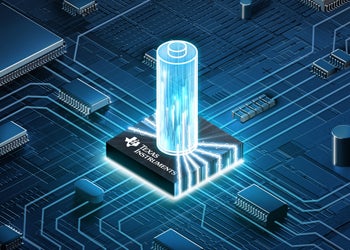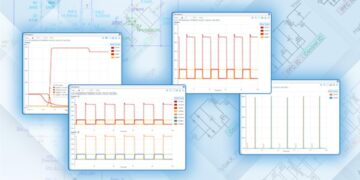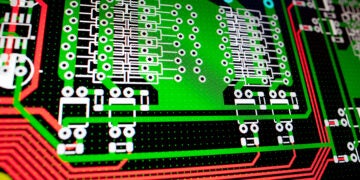
TI products help you optimize low power IQ design
As electronic devices, especially smart technology products, become ever more indispensable, the demand for portability continues to increase. Consequently, the need for improving the functionality, capability, and lifetime of battery-powered devices challenges engineers and designers to explore new technologies and solutions. A primary target area is power management, which affects many aspects of performance. Texas Instruments (TI), which has a long history of innovation in semiconductor and electronics development, is leading the way with new technologies and products that optimize low power IQ design of battery-powered circuit boards.
Advantages of TI’s Low Power IQ Devices
For electronic and/or electromechanical components and systems, effectively managing power consumption is always top of mind for designers. This is true for large systems, like EV battery management, as inefficiency results in increased operational costs and reduced lifetime for users. For low-power systems, the implications are more critical, and wasted energy degrades functionality and operational reliability. An effective solution is to focus on low quiescent current or low power IQ optimization, which minimizes the amount of energy a device uses at no load or during low-load operation.
Implementing a low power IQ solution; however, presents challenges. Effectively balancing the performance vs. battery life trade-off is one of the most daunting. TI has developed a strategy and a range of products that successfully address this and other concerns, as listed below, to implement IQ solutions.
|
BENEFITS OF TI’S LOW POWER QUIESCENT CURRENT TECHNOLOGIES |
|
|
Performance Attribute |
TI Low Power IQ Solution |
|
Battery life |
Long battery run time with ultra-low current leakage |
|
Power consumption |
Reduced consumption with zero-IQ feedback control |
|
Consistent power |
Always on, low consumption control technology |
|
Response time |
Fast dynamic response with fast wakeup components |
|
PCB real estate |
Low IQ improves thermal performance for space-constrained applications |
TI solutions lead the industry in IQ nanopower technologies; including the lowest power modes for standby operation without the typical tradeoff of lower performance and increased costs. The benefits of these advanced developments can be best understood by looking at the challenges of battery-powered circuit board design and their corresponding product solutions.
Battery-Powered PCBA Design: Challenges and Solutions
Minimizing loss of power when a battery-powered device is not generating an output is the objective of low IQ electronics design solutions. Achieving success, with a low IQ solution necessitates, that several barriers or challenges, as listed below, be understood and positively addressed.
|
Transient Response
Low quiescent current elements often have excessive transient response times–the time required to adjust to a new operating voltage after an operational change–due to internal parasitic capacitances having to charge to new values with less available current.
The best solution for transient response issues combines low IQ with fast response times. The TPS61299 achieves this balance with flexible always ON options in a synchronous boost converter architecture. |
|
Ripple
The amount of ripple during transition can also be a concern, especially for devices with low bias currents, resulting in output voltage errors.
The TPS62843 step-down converter implements TI’s DCS-Control topology to provide minimal to no ripple during operational transition. |
|
Noise
Thermal or 4KTR noise and low frequency or flicker noise must also be addressed for low IQ power designs. Bias circuit resistance and trace sizing are major contributors to noise issues.
Small resistors with lower voltage references mitigates thermal and flicker noise issues, which is the technological thrust of the TPS7A02 voltage regulator. |
|
Die size and solution area
The need for larger passive components or bigger packages for ICs often comes with lower IQ systems, which can be a problem when device real estate is a premium concern.
Reduced passives is an effective solution for die size reduction. A voltage supervisor like the TPS37-Q1 accomplishes this objective. Further size reduction is possible by integrating low IQ circuits, which is the function of the BQ25628 battery charge management device. |
|
Leakage and Subthreshold Operation
Leakage is another problem that is exacerbated when high-power FETs, memory and other digital circuits are used. Although low IQ designs offer distinct advantages, reliable biasing operation can be challenging in the subthreshold region due to random threshold voltage mismatch.
Leakage is not limited to internal circuitry. External devices, especially passives, contribute to excessive leakage current. Choosing the right combination of components is the solution, which will vary depending upon your design and application. Bench testing is a preferred option, as opposed to relying on datasheet specifications, to aid you in making the best selections for your product. |
As shown above, there are a number of significant–and often competing–concerns when applying low IQ technology. Overcoming these low quiescent current challenges is critical. The payoff is a highly effective solution for optimizing your battery-powered electronics product design.
How to Optimize Low Power IQ Design
The use of battery-powered devices is growing and will continue to do so. Therefore, it is imperative to understand how to design systems that will not only meet functionality goals, but also perform reliably and efficiently over its lifecycle. Essential to meet these mandates is minimizing power loss or waste. Implementing a low power IQ design is the solution, provided goos guidelines are followed.
|
Guidelines for Low Power IQ Design
|
If you’re looking for CAD models for common components or important information on how to optimize low power IQ design, Ultra Librarian helps by compiling all your sourcing and CAD information in one place.
Working with Ultra Librarian sets up your team for success to ensure streamlined and error-free design, production, and sourcing. Register today for free.








